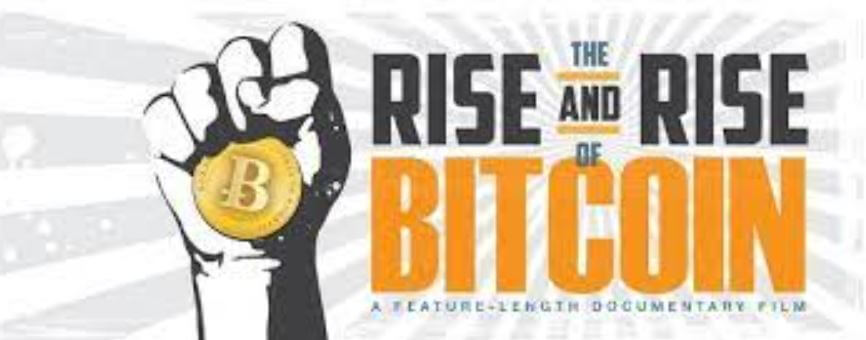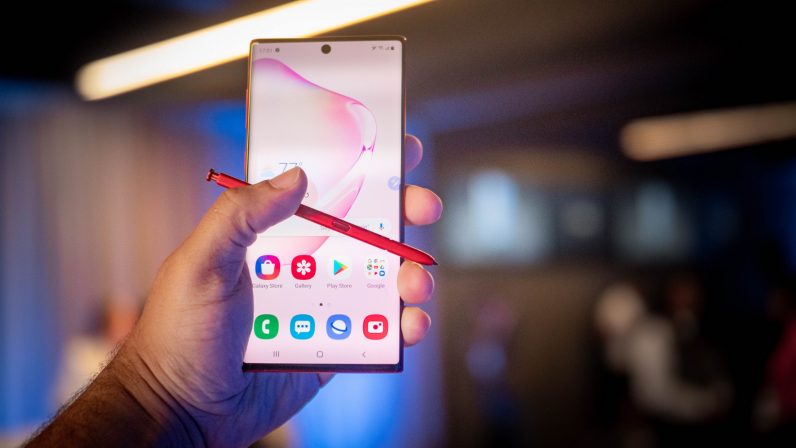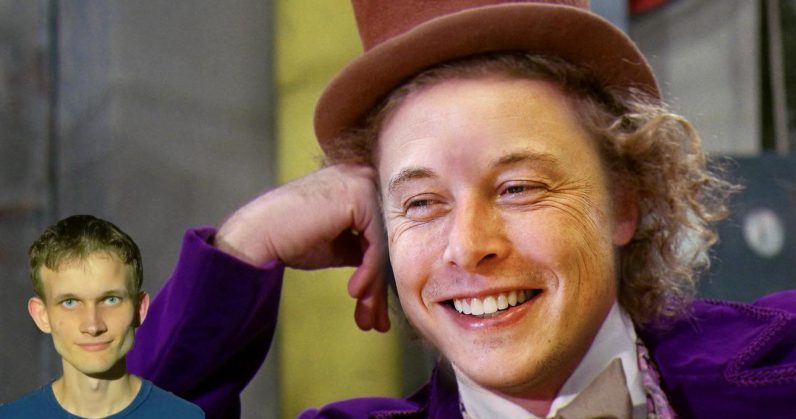
2022-2-8 02:00 |
Bitcoiners understand that ideas are best built upon in a system that does not restrict innovation.
The Price of Yesterday’s Innovation: Applying Insights From Jeff Booth’s “The Price of Tomorrow” To The U.S. Patent System*Special thanks to Jeff Booth for discussing these ideas with the author.
In his 2020 book, “The Price of Tomorrow: Why Deflation Is the Key to an Abundant Future,” Jeff Booth describes two opposing forces at the core of our economy: fiat monetary debasement (i.e., money printing) and technological advancement. Monetary debasement is inflationary, as prices rise when more dollars, euros, etc., chase after the same number of goods and services. Technological advancement, by contrast, is deflationary, as over time technological breakthroughs allow for goods and services to be produced and distributed at higher volume and lower cost. The effects of these opposing forces on price levels somewhat cancel each other out; an increased supply of currency is matched to some degree with an increased supply of goods and services available. Of course, different classes of goods and services are impacted by technological innovation to different degrees, which results in uneven inflation rates across industries. The rate of innovation in the consumer electronics industry, for example, is faster than the rate of monetary debasement, resulting in the net reduction in electronics prices we have all come to enjoy. Technological advancement has had far less impact on housing and higher education, however, which can at least partially explain the rapid inflation in those sectors. As Booth explains, both monetary debasement and technological advancement are exponential in nature. The rate at which governments are printing currency and the rate of technological innovation are increasing every year.
Booth persuasively argued that monetary debasement has deleterious effects on society, whereas innovation-driven deflation has the positive effects of, for example, mitigating wealth inequality and poverty. In essence, monetary debasement serves as a hidden regressive tax on the population, redistributing the wealth generated by productivity gains to the government via seigniorage and to wealthy asset holders via asset inflation. If this monetary debasement were curtailed, Booth argues, the entire population would enjoy the benefits of technological advancement in the form of plummeting prices on goods and services. If you have not yet read Booth’s book, you should.
This article expands on Booth’s work by considering the impact of monetary debasement and technological innovation on the economics of the U.S. patent system. The modern patent framework was established in 1952. Much has changed in the last 70 years, both in terms of U.S. monetary policy and the state of technology. The United States of 1952 was still on a gold standard, preventing the government from debasing the currency as it is doing rampantly today. The rate of technological change was also much slower in 1952 than it is now, as the country was just beginning to enter the computer age and globalization was a far ways off. In view of these massive changes in our economy which are continuing to unfold, it is the author’s opinion that the U.S. patent system is becoming increasingly unable to serve its purpose of promoting innovation and economic growth. A return to sound money (i.e., ending monetary debasement by adopting a bitcoin standard) would resolve at least some of the issues plaguing the current patent system. Alternatively or additionally, reforming the patent laws could bring them into closer alignment with the exponential economy we now live in.
I. Brief Overview Of U.S. Patent Law And Policy Considerations1A patent is a legal right granted by the federal government to the creator of a new and useful invention. It allows the inventor to prevent others from practicing — that is, making, using, selling, importing or offering for sale — the invention during a defined period of time following the patent’s grant. Every patent is published, providing the public not only with notice of the inventor’s exclusionary rights, but also with a description of what the invention is and how to make and use it.
The purpose of the patent system is twofold. First, it provides innovators with an incentive to expend resources on research, development and marketing that could otherwise be unprofitable. Without the exclusionary rights provided by a patent, copiers would quickly reverse engineer innovators’ products to create competing products with the same inventive features. By skipping the resource-intensive process of developing the invention, and riding on the coattails of the innovators’ early efforts to introduce consumers to the technology, copiers would often be able to offer the invention at a lower price than the innovator and take significant market share. Patents prevent this scenario by providing innovators with an exclusive right to use an invention during a patent’s term. Any copier during this time is liable to be sued for patent infringement.
The second purpose of the patent system is to incentivize public disclosure of new innovations rather than secrecy. In many instances, an invention cannot readily be reverse engineered by competitors, and so the above-described concern regarding copycats is not applicable. For example, an inventive process of manufacturing a product might not be discernible by examining the product itself. Inventors of such innovations have the option of maintaining their competitive advantage merely by keeping their technology secret (what is known as a “trade secret”), but this is viewed as less socially desirable than patenting because the public is not apprised of the latest technological developments. The patent system incentivizes creators of even inventions that cannot be reverse engineered to disclose their inventions, facilitating further incremental improvements on the technology by others in the field.
Although a patent may prevent competitors from using or commercializing a particular product, it is important to recognize that patents relate to technologies rather than specific products. A single product might contain many patented technologies and thus be subject to the exclusionary rights of many different patentees. Consider, for example, a modern car. How many patented technologies does it contain? There are patents pertaining to different aspects of the battery, the computer systems, the heating and cooling systems, the external camera system, the composition of the tires, the engine or electric motors, etc. A car manufacturer must own or license the rights to each of the patents for the technologies it uses, or risk being dragged through the courts in patent infringement lawsuits. Simply owning a patent that covers a particular product does not confer a legal right to make, use or sell that product; it only confers a legal right to prevent others from doing so without permission.
Because patents relate to technologies, and because technologies are incremental in nature, a poorly designed patent system can actually impede innovation rather than augment it. If the patent term is too long, for example, pioneers and early innovators in a technological field can exert disproportionate control over (and extract undue profits from) later innovators, thereby discouraging later innovation. Let’s continue with the car hypothetical to illuminate this point. Imagine that Inventor A has a patent on a generic wheel. Inventor B has a patent on a wheel that contains a rubber surface. And Inventor C has a patent on a wheel containing an inflated rubber tire. An automaker wants to introduce a new line of wheels with inflated rubber tires that have reinforced sidewalls and treads. Even though none of Inventors A, B and C contemplated tires with reinforced sidewalls or treads, the automaker’s new wheels would nevertheless practice each of their patents. The automaker would, therefore, need to negotiate a license with each of the prior inventors, and any one of the inventors could block the automaker’s new product by refusing to grant such a license. Faced with these headwinds, the automaker could decide not to develop the new wheels at all, instead opting for existing alternatives. If the patents owned by Inventors A and B had expired, however, the automaker would be more willing to develop the new wheels because it would only require a license from Inventor C. It is, therefore, important for patents to expire within a reasonable time frame to prevent them from choking out later innovation. Patents need only last long enough to provide innovators with an adequate incentive to invest in developing new technologies.
The patent system’s capacity to impair innovation is compounded by errors made by the U.S. Patent and Trademark Office (the “Patent Office”) during examination. The Patent Office serves as the gatekeeper for the issuance of new patents, allowing patent applications to issue as patents only when they fulfill several criteria:
The alleged invention is novel, that is, it has never been made or described in a publication before.The alleged invention is non-obvious, that is, it is more than a routine modification of something that was made or described before.The patent describes the alleged invention in detail and further describes how to make and use it.The patent’s claims, that is, the scope of the exclusionary rights conferred by the patent, are sufficiently narrow such that they do not encompass subject matter that was already known or that the patent does not adequately disclose.The patent’s claims are unambiguous such that the public has proper notice of what falls within the patent’s exclusionary rights and what does not.In short, the Patent Office attempts to only allow a patent to be issued when it describes an actual invention and is narrowly and clearly tailored to that invention. Unfortunately, making the correct determination regarding the above criteria is a challenging and time-consuming task, and the Patent Office’s employees evaluating patent applications (known as “examiners”) have limited time to evaluate each application given that over half a million new patent applications are filed every year. As a result, many patents are granted that either do not describe actual inventions, convey exclusionary rights that far exceed the scope of any invention disclosed, and/or are simply vague as to their exclusionary rights. These patents are “invalid” and unenforceable, although one never knows for sure whether a patent is indeed invalid until a court (or in some cases, the Patent Office) issues a judgment finding that it is invalid. When a patent practitioner suspects that a patent would be found invalid if put to the test, the practitioner might refer to the patent as being “low quality.”
An abundance of low-quality patents in circulation serves as a further drag on innovation and economic activity because these patents are often used by patentees to extract costly licenses and settlements from manufacturers and other companies that build, sell, or use technology. Proving that a low-quality patent is invalid and hence unenforceable/worthless, or that it does not cover a particular product (i.e., “is not infringed”), typically costs well over $1 million in legal fees, and there is no guarantee of success. As such, many companies opt to pay off holders of low-quality patents despite believing that they have no legal obligation to do so. Acquiring and asserting low-quality patents to extract these nuisance payoffs — what is derogatorily referred to as “patent trolling” — has become a lucrative business model in recent years. Small and start-up companies are often hit hardest by patent trolling because they have limited resources to defend themselves in court and/or pay for licenses. In short, the issuance of significant numbers of low-quality patents impedes innovation and economic growth by ultimately imposing unjustified costs on companies that actually build things, disincentivizing new productive enterprises.
A patent system should, therefore, be designed to optimize patent term length (not too short to provide meaningful incentives to innovate but also not so long that later innovation is choked out by a thicket of too many existing patents) and minimize the issuance of low-quality patents. A poorly designed patent system can impair innovation and economic growth to the same extent that a well-designed patent system can augment them.
II. As Technological Advancement Accelerates, Less Patent Term Is Needed.The current term for U.S. patents is 20 years from the time an inventor submits a patent application to the Patent Office. This patent term was modified in 1994 from the patent term provided by the Patent Act of 1952 but is approximately equivalent in total length.2
One need not be a historian of economics to understand that it took longer and was more expensive to commercialize new products in 1952 than today. The innovators of 1952 did not have access to, for example, offshore contract manufacturers that adapt quickly to new products and can increase volume rapidly and at low cost. Nor did they have access to today’s responsive supply chains, which are able to bring new products from conception to the shelf in record time. Every aspect of product manufacturing and distribution took longer and was more expensive in 1952.
Product marketing and sales were also more challenging in 1952 than they are today. Decades before the internet, innovators educated consumers on new products via print advertising, television advertising, sales representatives, etc. This was a slow and expensive process. Today, intelligent internet algorithms allow consumers to find exactly what they need in seconds, and even anticipate consumers’ needs and desires using targeting advertising. The rise of platforms like Amazon has dramatically reduced the cost of marketing and sales of new products.
As Booth explains in his book, these trends will no doubt continue exponentially into the future. Manufacturing facilities will utilize more sophisticated automation equipment and incorporate developing technologies like 3D printing, driving costs down and responsiveness up. Logistics will also employ more automation such as driverless vehicles, reducing transport costs and shipping time. Marketing algorithms will find customers with greater efficiency. Eventually, customers might routinely 3D print new products directly to their homes, reducing the lag between product conception and product sales to near-zero.
Not only are the costs and time associated with bringing new products to market decreasing over time, so is the cost of developing new patentable technologies. The increased use of artificial intelligence and machine learning in the invention process has been a hot topic in recent years. These technologies can already perform much of the work classically associated with innovation, and there have even been examples of AI algorithms conceiving of complete inventions. As these technologies continue to develop, the cost of innovating new products will continue to decrease and the speed at which new technologies are developed will continue to increase.
And finally, technology is even decreasing the cost associated with transferring and monetizing patents. IBM and IPwe announced in 2021 that they had “plans to begin representing patents as non-fungible tokens (NFTs) or digital assets” to “help position patents to be more easily sold, traded, commercialized or otherwise monetized and bring new liquidity to this asset class for investors and innovators.” As patents become more liquid and easily monetized, their value increases.
As discussed above, the patent system is designed to provide a financial reward to innovators to incentivize bringing new technologies to market, which it accomplishes by providing inventors with a static 20-year period in which they have exclusive rights to their inventions. If 20 years of exclusivity was sufficient to incentivize innovation in 1952 (which it was, as evidenced by the rapid technology-driven increase in standard of living during the mid-20th century), then today that same exclusivity period is overcompensating innovators. The cost of innovating new products, the cost of bringing those products to market, the cost of marketing those products, and the time needed to bring those products to market (i.e., the payback period) have all plummeted, and the number of new innovations a patent might lay claim to in a given 20-year period has exponentially increased. Yet the 20-year patent term remains essentially unchanged.
The failure of the patent system to adapt to exponential technological growth has given rise to the problems associated with unduly long-lived patents discussed above. Whereas in 1952 it might have been reasonable for a patent filed in 1932 to cover follow-on technology developed in 1952, today the calculus is far different. Much less technological development occurred between 1932 and 1952 than occurred between 2002 and 2022, and the cost of innovating was far higher. But because the patent term has not been meaningfully updated, it is not uncommon to see a 2002 patent on some crude telecommunications technology asserted in court against the manufacturers of cutting-edge 5G products and systems. Indeed, because modern technology companies face patents from a full 20 years of rapid technological growth, their potential patent liability in developing new products can be essentially unknowable. This can have the effect of narrowing the rollout of new products to only the largest companies with the resources to navigate and defend against such patent thickets, accelerating consolidation and monopolization.
The static 20-year patent term also provides increasing incentives for individuals and companies to file low quality patent applications, further clogging the arteries of the Patent Office and providing patent trolls with ammunition to parasitize future technology companies. As noted above, the Patent Office’s job is to prevent these applications from issuing as patents, but resource constraints in the face of ever-increasing application rates necessarily means that some low-quality patent applications will issue as low-quality patents. The increasing rate of technological development enhances the value of these low-quality patents, as patent trolls looking to assert these patents will see more potential targets during a 20-year period than they would have seen in prior years. Thus, even when a person has an idea that she does not believe is inventive or has immediate commercial value, the 20-year patent term increasingly incentivizes seeking a patent because the patent can be used to extract nuisance payoffs from unforeseen innovators in the distant future. The issuance of low-quality patents has only negative economic effects, ultimately facilitating a transfer of wealth from productive companies to parasitic patent trolls, and thus the static 20-year patent term that rewards seeking low-quality patents is suboptimal.
In sum, the architects of the current patent system did not factor in the exponential rate of technological growth, which has over time brought the patent system severely out of alignment with reality. The 20-year patent term now provides excess incentives to innovators at the cost of future innovators, giving rise to several negative effects. Patents from the distant past are now a drag on new innovation. The largest companies are more resilient to patent enforcement, driving monopolization in technology industries. And people are incentivized to seek patent protection for non-inventions, congesting the Patent Office and fueling patent trolls.
Amending the patent term to be responsive to exponential technological progress would immediately benefit the economy by mitigating the above-discussed issues. The new rule would provide a schedule of term lengths for newly issued patents in which the terms decrease over time.3 A patent issued in 2030 would have a shorter term than a patent issued in 2022. The patent term lengths would ideally collapse toward zero as humanity approaches the theoretical technological singularity, at which point technology will progress so quickly that the patent system — which currently takes years to issue patents and years to enforce them — will have no hope of keeping pace. Patent law might then be abandoned altogether, leaving first-mover advantage and reputation enhancement as the primary incentives to innovate. Indeed, the costs of innovating, commercializing inventions and finding customers in the distant future will be so low that patent protection might be totally unnecessary.
III. Monetary Debasement Incentivizes Seeking Low Quality Patents That Are Harmful To The Economy.It is well understood in the Bitcoin community, as well as by savvy investors, that a nation’s debasement of its currency by expanding the money supply has enormous impacts on investment activity and outcomes. Seeking a patent is an investment, and thus patent activity and outcomes are also manipulated by monetary debasement.
For simplicity, the below discussion refers to economies subject to significant monetary debasement as “inflationary” and economies that have hard money (i.e., hyperbitcoinized economies where prices are governed primarily by deflationary technological progress) as “deflationary.” In an inflationary system, today’s money is essentially guaranteed to decrease in value over time, whereas goods and services will increase in price over time. In a deflationary system, the opposite is true: Today’s money will increase in value over time and goods and services will decrease in price over time. Inflationary systems incentivize speculation (i.e., spending today’s money on assets that will likely appreciate in nominal terms), whereas deflationary systems incentivize saving (i.e., holding today’s money to buy cheaper goods and services in the future when they are more needed).
Just as financial markets and real estate can be subject to rampant speculation in inflationary systems, so, too, can patenting activity. Consider, for example, the following hypothetical. A researcher in a company develops a new idea for a car technology and submits a description of that technology to the relevant business manager. The manager must decide whether to file a patent application for the technology. She estimates that the cost of seeking a patent is $20,000, comprising attorney fees and Patent Office filing fees. The company is not planning on developing any new products that would use the technology, and in fact, the manager doubts that any novel aspects of the technology are actually useful. Nevertheless, because the $20,000 in the manager’s budget will decrease in value if unused, and because the car market is expected to increase exponentially in nominal value in the coming 20 years when the patent would be enforceable, the manager decides to move forward with seeking a patent on the technology. Even a low probability that the company can one day extract a nuisance payoff from a competitor makes the patent a worthwhile investment. If the average car in 20 years is expected to cost $500,000, then even a very low probability of extracting some value of the car market can have a high speculative value. The expected inflation in legal costs associated with defending against patent infringement lawsuits further increases the speculative value of the patent, as future competitors will be incentivized to settle frivolous infringement lawsuits rather than defend themselves.
Now consider the same hypothetical in a deflationary bitcoinized system. The manager knows that the 0.01 bitcoin required to obtain a patent will increase in purchasing power over the next 20 years, whereas cars will become cheaper and cheaper over that time due to technological advancement. In other words, the present cost of obtaining patent rights 20 years in the future in a deflationary system is extremely high, whereas the potential reward can be very low. Without a clear path for quickly monetizing the technology, such as by implementing it in upcoming products, the manager is more likely to save the bitcoin for a better investment opportunity.
Accordingly, inflationary systems incentivize the speculative proliferation of low-quality patents, which clog the Patent Office and result in parasitic patent-trolling activity. Deflationary systems, by contrast, incentivize prudence in patenting decisions, focusing scarce monetary resources on protecting only high-value inventions and reducing the profitability of parasitic patent-trolling. Transitioning from our current inflationary system to a deflationary system based on bitcoin would thus likely heal many of the ailments with the patent system we see today.
IV. ConclusionMany observers have criticized the patent system in recent years as being broken or counter to its own objectives. Patent trolls are a persistent problem for technology companies. Vast patent thickets amassed by the largest corporations can be used to drown out competition from smaller market entrants. And the Patent Office is so inundated with patent applications that it has difficulty keeping pace while assuring that only high-quality applications are issued as patents. The result is that many innovators feel threatened or taxed, rather than empowered, by the patent system.
If the author’s thesis is correct, the dysfunction of the present system stems largely — if not entirely — from the fact that it was designed for the U.S. economy of 1952, which is long gone. The 1952 economy was defined by slower technological progress and slower monetary expansion under the gold standard. The patent laws have not meaningfully adapted to these changes, and thus the hand has outgrown the glove.
As a Bitcoiner, the author must always ask, “Does bitcoin fix this?” The answer is yes, to some degree, because sound money reduces the incentive to speculate that is at the root of at least some of the patent system’s problems. But even under a bitcoin standard, the patent term awarded to newly issued patents will likely need to decay over time to adjust to the exponential rate of technological progress. If humanity truly is approaching a singularity wherein the rate of technological advancement exceeds our ability to comprehend it, the absurdity of a static 20-year patent duration will eventually become apparent to everyone.
As a final note, although this article has focused on the U.S. patent system, there are likely many other examples of legal frameworks that are currently dysfunctional for failing to adapt to monetary debasement and/or accelerating technological progress. Similarly, there are no doubt legal frameworks with more recent origins that are well-adapted to our inflationary system but will become hopelessly dysfunctional under a future deflationary bitcoin standard. The author calls on Bitcoiners with expertise in these various areas to help prepare for a bitcoinized future by analyzing how other existing legal systems will need to be updated.
Footnotes
1. This discussion of patent law is greatly simplified and excludes jargon to convey only the basic concepts that relate to this article’s thesis.
2. The original 1952 patent term was 17 years from the date the patent was issued. Because it was typical for patents to issue a few years after filing, the change to 20 years from patent filing did not materially alter the overall patent term. The change was intended primarily to end a strategic practice by some patent applicants to intentionally keep their patents from issuing as long as possible so they could extend their exclusionary rights into the distant future. This was known colloquially as “patent ambush” using “submarine patents,” referring to the patents’ ability to emerge with a full patent term a decade or more — sometimes multiple decades — after their filing date, unfairly surprising competitors who may have independently developed the patented technology while the application was pending.
3. In the author’s experience, the only industry potentially deserving of extended exclusionary rights is pharmaceuticals/therapeutics, due to the costly testing required to prove safety and efficacy for a new drug. The patent system is not needed to provide any such extended rights, however, as the Food and Drug Administration already has its own parallel mechanisms for granting exclusionary rights to drug makers.
This is a guest post by Million Plebs. Opinions expressed are entirely their own and do not necessarily reflect those of BTC, Inc. or Bitcoin Magazine.
origin »Independent Money System (IMS) íà Currencies.ru
|
|


















